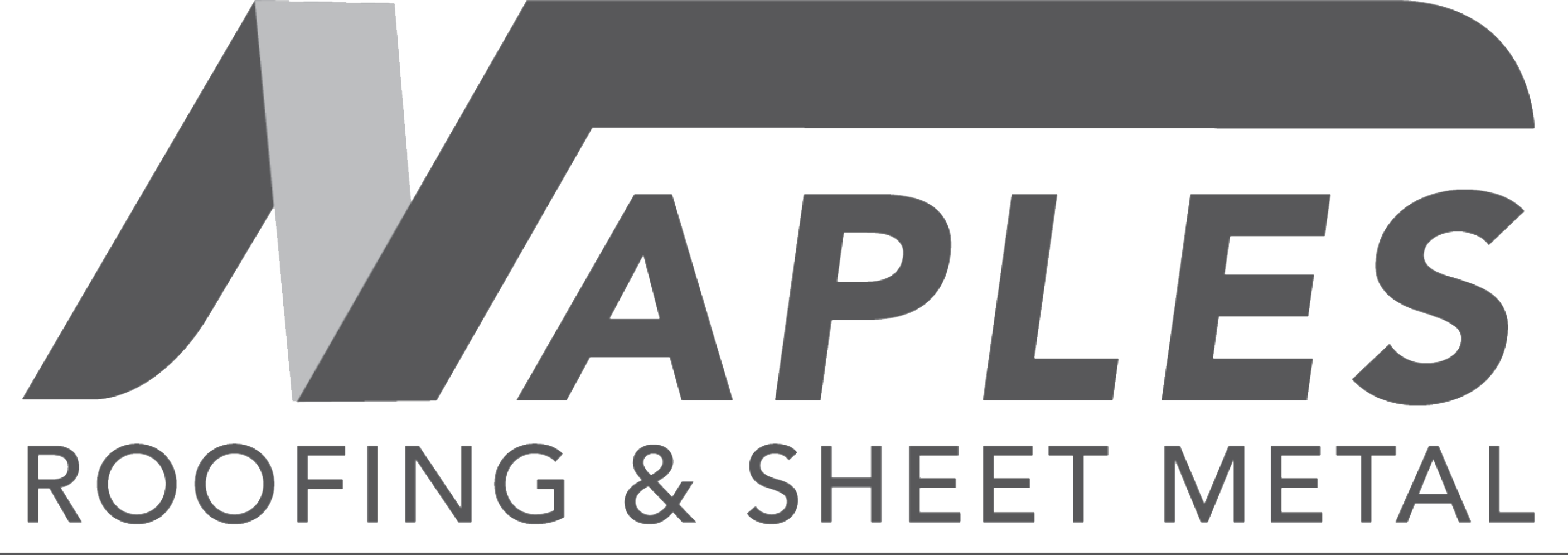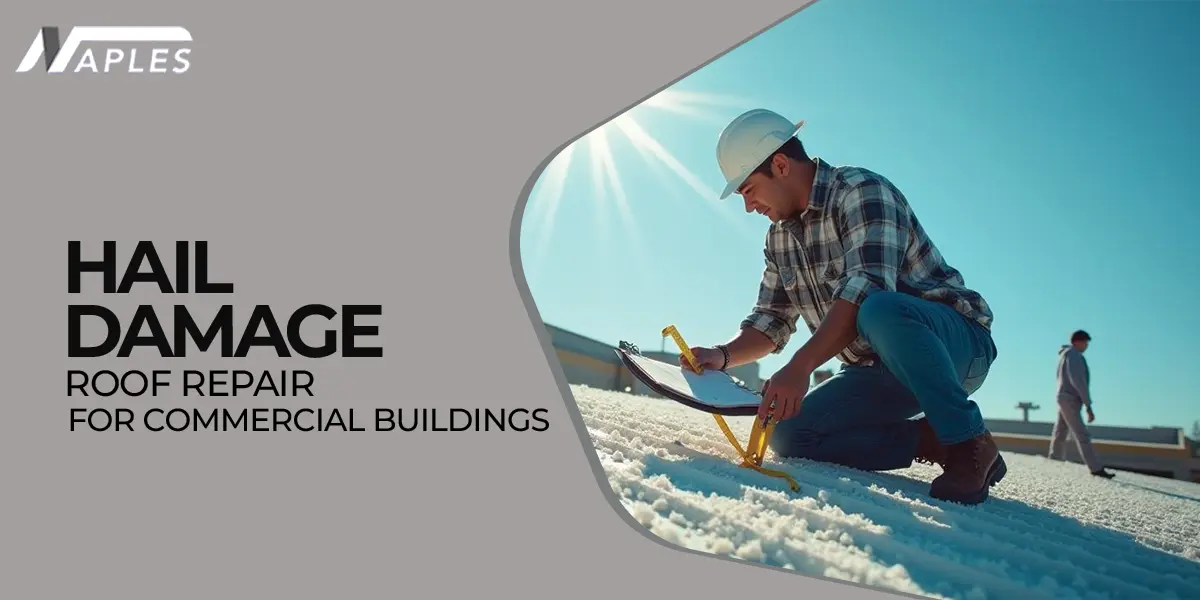Hail Damage Roof Repair for Commercial Buildings
Hailstorms can wreak havoc on commercial buildings, causing significant damage to roofing systems. Unlike residential roofs, commercial roofs often have flat or low-slope structures, making them more susceptible to hail impact. From minor dents to severe structural damage, hail can compromise the integrity of your roof, leading to leaks, insulation issues, and costly repairs if left unaddressed. Seeking timely hail damage roof repair is essential to preventing long-term issues and maintaining the structural integrity of your building.
If your commercial property has recently been hit by a hailstorm, it’s crucial to assess the damage promptly and take corrective measures to protect your investment.
In this comprehensive guide, we’ll explore commercial roofing USA hail damages, the repair process, insurance considerations, etc.
Understanding Hail Damage on Commercial Roofs
Hail Damages Commercial Roofs
Hail damage varies based on factors such as hail size, wind speed, and roofing material. Here are some common ways hail affects commercial roofs:
- Membrane Damage – Single-ply roofing membranes, such as TPO, EPDM, or PVC, can sustain punctures or cracks from hail impact, leading to leaks and water infiltration.
- Granule Loss on Modified Bitumen Roofing – Hailstones can dislodge protective granules, exposing the underlying layers to UV damage and premature aging.
- Dents in Metal Roofing – While metal roofs are durable, large hailstones can cause dents, weakening the structural integrity over time.
- Compromised Roof Coatings – Reflective or protective coatings may crack, reducing energy efficiency and waterproofing properties.
- Gutter and Drainage System Issues – Hail can damage gutters, causing water pooling and drainage problems.
Signs of Hail Damage Roof Repair
Identifying hail damage early is crucial. Look out for:
- Visible dents or cracks on metal surfaces and shingles.
- Dislodged roofing granules lead to bald spots on asphalt shingles.
- Water stains or leaks inside the building.
- Pooling water on flat commercial roofs.
- Tears or punctures in membrane roofing systems.
Steps to Assess Hail Damage Roof Repair
- Conduct a Visual Inspection: Walk around your property and look for fallen debris, damaged landscaping, or dented air conditioning units as initial indicators.
- Check the Roof’s Surface: Inspect for missing or cracked shingles, dents on metal panels, or punctures in membrane roofing.
- Inspect Flashing and Gutters: Damaged or clogged drainage systems can worsen the impact of hail damage.
- Hire a Professional Roofing Contractor: A trained expert can perform an in-depth assessment and provide a detailed report on the extent of the damage.
Hail Damage Roof Repair Solutions
Temporary Fixes to Prevent Further Damage
Before permanent repairs begin, take these immediate actions:
- Tarp Over Exposed Areas: This helps prevent water intrusion until repairs can be completed.
- Clear Debris from Gutters and Drains: Ensuring proper drainage can reduce further damage.
- Seal Minor Cracks or Punctures: Using temporary roofing cement or patches can prevent leaks.
Permanent Repair Options
- Shingle or Panel Replacement: For localized damage, replacing individual shingles or metal panels can be sufficient.
- Membrane Roof Repair: Damaged areas of EPDM, TPO, or PVC membranes can be patched or sealed with specialized adhesives.
- Coating Applications: Roof coatings provide an additional layer of protection and extend the life of the roof.
- Full Roof Replacement: In cases of extensive damage, a complete roof replacement may be necessary.
Working with Insurance for Hail Damage Claims
Steps to File a Roof Damage Claim
- Document the Damage: Record and take clear images of any place that is impacted.
- Review Your Insurance Policy: Check for coverage details related to hail damage.
- Contact Your Insurance Provider: Report the claim and schedule an inspection with commercial roofers in usa.
- Get a Professional Roofing Inspection: An expert report can support your claim.
- Negotiate with Adjusters: Ensure you receive fair compensation for repairs or replacements.
Preventing Future Hail Damage
- Install Impact-Resistant Roofing Materials: Class 4 impact-resistant shingles or reinforced metal panels offer better durability.
- Apply a Protective Roof Coating: Elastomeric or silicone coatings can reduce hail impact damage.
- Regular Roof Maintenance: Annual commercial roofing inspections can help identify weak spots before major damage occurs.
- Improve Drainage Systems: Proper water flow prevents pooling, which can worsen hail-related damage.
- Install Hail Guards on HVAC Units: Protect rooftop equipment from hail impacts.
Post-Repair Maintenance Tips
- Schedule Regular Inspections: Conduct professional roof inspections twice a year to catch early signs of wear and tear.
- Keep Gutters and Drains Clear: Remove debris regularly to ensure proper drainage and prevent water pooling.
- Monitor for Leaks: Check ceilings and walls inside the building for any water stains or signs of moisture.
- Trim Overhanging Branches: Trees near the building can cause additional damage in storms; keep them well-trimmed.
- Reapply Roof Coatings as Needed: Protective coatings wear over time, so periodic reapplication can extend your roof’s lifespan.
- Address Minor Issues Promptly: Fix small cracks, loose shingles, or dents before they develop into bigger problems.
- Ensure Proper Ventilation: Proper airflow helps prevent moisture buildup that can weaken roofing materials.
- Maintain Roofing Warranty: Follow manufacturer guidelines for maintenance to keep warranty coverage valid.
Frequently Asked Questions (FAQs)
-
Do I really need to replace my roof after hail?
Not necessarily. Minor hail damage can often be repaired without a full replacement. However, if the damage is extensive, leading to leaks or structural weaknesses, a full replacement might be the best long-term solution. Moreover, a professional roof inspection can determine whether repairs or replacements are necessary.
-
Will insurance pay for hail damage to the roof?
Most commercial property insurance policies cover hail damage, but coverage depends on the policy terms and deductible. It’s essential to document the damage, report it promptly, and work with an adjuster to assess the extent of repairs needed. Moreover, reviewing your policy in advance can help you understand your coverage.
-
What happens if you don’t fix hail damage?
Ignoring hail damage can lead to severe consequences, including water leaks, mold growth, insulation damage, and even structural failure over time. Small cracks and dents can worsen with exposure to weather conditions, making repairs costlier in the long run. Addressing damage promptly can prevent bigger issues.
-
What do you need to do when a hailstorm damages your roof?
After a hailstorm, inspect your roof for visible damage, take photos for documentation, and check for leaks inside the building. Clear debris from gutters, apply temporary tarps if needed, and contact a professional roofer for an assessment. If applicable, notify your insurance provider to begin the claims process.
Concluding
Hail damage to commercial roofs is a serious concern that requires prompt assessment and repair. By understanding the impact of hail, taking preventive measures, and addressing damage immediately, you can protect your building’s longevity and minimize financial losses. Also, if you suspect hail damage, consult a professional commercial roofing company Buffalo to assess the situation and guide you through repairs or replacements as needed.
Naples Roofing offers top-tier local commercial roofing services, ensuring durability, safety, and energy efficiency for businesses. From hail damage roof repair to complete installations, they provide expert solutions tailored to your needs. As the best commercial roofing company, Naples Roofing guarantees high-quality materials, skilled workmanship, and timely project completion for long-lasting protection.


